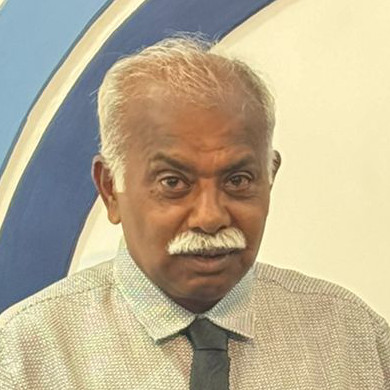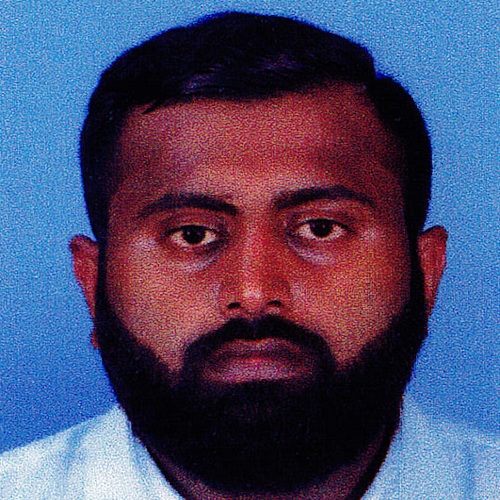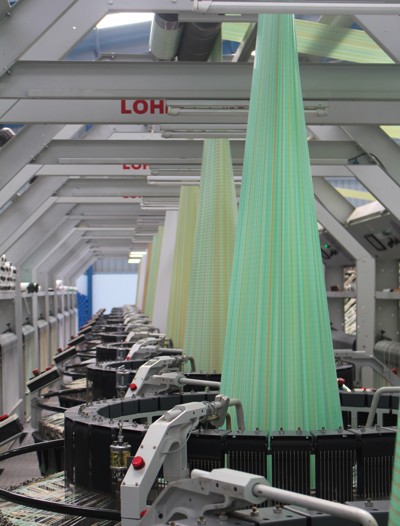

CEYTEC PACKAGING (PVT) LTD , founded in 2004, is a leader in the packaging industry with a cutting-edge factory based in Negombo, Sri Lanka. Our experienced technical and management team is dedicated to delivering top-notch packaging solutions. We specialize in manufacturing PP woven bags, LDPE films, and inner liners for major sectors including fertilizers, chemicals, phosphate, rice, and sugar.
Our commitment to quality and reliable supply has earned us high praise from our valued customers, a testament to the meticulous care we provide for each client.
Under the visionary leadership of a dynamic industrialist, our company is at the forefront of the market. Currently, our monthly production capacity is approximately two million bags, and we anticipate this output to double in the coming years as part of our expansion program.
We promise our clients exceptional quality, personalized attention, and ongoing support throughout our services.
C ommitted
E nthusiastic
Y oung
T echnologically
E mpowered
C orporation
Ceytec History/ Milestones/ Achievements/ Our Success Story
2005 – Ceytec begins the Journey in manufacturing industry with capacity of 1 million bags per month.
2015 – Celebrated the successful 10th Anniversary.
2016 – While celebrating 11 successful years in Manufacturing,we have upgraded our capacity to 2 million bags per month.
Polyethylene, well known as "polythene' was discovered in 1933 by Reginald Gibson and Eric Fawcett at the British industrial giant Imperial Chemical Industries (ICI). This material evolved into two forms, low density polyethylene (LDPE) and high density polyethylene (HDPE). Polyethylene is cheap, flexible, durable, and chemically resistant. LDPE is used to make films and packaging materials, including plastic bags, while HDPE is used more often to make containers, plumbing, and automotive fittings.
By 1936, American, British, and German companies were producing "polymethyl methacrylate" (PMMA), better known as "acrylic." Although acrylics are now well-known for the use in paints and synthetic fibers, in their bulk form they are actually very hard and more transparent than glass, and are sold as glass replacements.
Polyurethane was invented by Friedrich Bayer & Company of Germany in 1937. It came into use, after the war, in blown form for mattresses, furniture padding, and thermal insulation. It is also used in non-blown form for sports wear such as "lycra".
In 1939, I.G. Farben Industrie of Germany filed a patent for "polyepoxide" or epoxy." Epoxies are a class of thermoset plastics that form cross-links and "cure" when a catalyzing agent, or "hardener," is added. After the war, they would come into wide use for coatings, "super glues," and composite materials.
Two chemists named Rex Whinfield and James Dickson, working at a ...TRIMPRF small English company with the quaint name of the "Calico Printer's Association" in Manchester, developed "polyethylene terephthalate" (PET or PETE) in 1941. It is used for synthetic fibers in the postwar era, with names such as "polyester," "dacron," and "terylene."
One of the most impressive plastics used in the war, and a top secret, was "polytetrafluoroethylene" (PTFE), better known as "teflon," which could be deposited on metal surfaces as a scratchproof and corrosion-resistant, low-friction protective coating. The polyfluoroethylene surface layer created by exposing a polyethylene container to fluorine gas is very similar to teflon.
A Du Pont chemist name Roy Plunkett discovered teflon by accident in 1938. During the war, it was used in gaseous-diffuson processes to refine uranium for the atomic bomb, as the process was highly corrosive.
One of the most important plastic emerged after the war is Earl Tupper's "tupperware," a complete line of sealable polyethylene food containers that Tupper cleverly promoted through a network of housewives who sold Tupperware as a means of bringing in some money. The Tupperware line of products was well thought out and highly effective, greatly reducing spoilage of foods in storage. Thin-film "plastic wrap" that could be purchased in rolls also helped keep food fresh.
Polyethylene led, after the war, to another material, "polypropylene" (PP), which was discovered in the early 1950s. Two American chemists working for Phillips Petroleum of the Netherlands, Paul Hogan and Robert Banks, are now generally credited as the "official" inventors of the material. Polypropylene is similar to its ancestor, polyethylene, and shares polyethylene's low cost, but it is much more robust. It is used in everything from plastic bottles to carpets to plastic furniture, and is very heavily used in automobiles.
Another prominent element in 1950s homes was "formica," a plastic laminate that was used to surface furniture and cabinetry. Formica was durable and attractive. It was particularly useful in kitchens, as it did not absorb, and could be easily cleaned of stains from food preparation, such as blood or grease. With formica, a very attractive and well-built table could be built using low-cost and lightweight plywood with formica covering, rather than expensive and heavy hardwoods like oak or mahogany.
Plastics continue to be improved. General Electric introduced "lexan," a high-impact "polycarbonate" plastic, in the 1970s. Du Pont developed "kevlar," an extremely strong synthetic fiber that was best-known for its use in bullet-proof vests and combat helmets. It was so remarkable that Du Pont officials actually had to release statements to deny rumors that the company had received the recipe for it from space aliens.



Packaging is the art, science and the technology of enclosing, protecting products for distribution, storage, sales and finally for use. It is the coordinated system of preparing goods for transport, warehousing and logistics.
Thus it is very important to select the correct packaging for the correct product. Our challenge was to meet the diverse packaging needs of our precious customers, which ultimately brought the success to Ceytec.
From our manufacturing commencement from July 2005, we gradually increased our employees from 80 to 120 to enhance the productivity through continuous experiments and innovations. As a result, the need for our product in the market increased and now we are expanding our production capacity from one million bags per month to two million bags per month.
With the state-of -the-art technology at our Negombo factory, and continuous upgrading of the machines to the latest technology, we are sure that our reputation will continue to flow with the success of our clients.
"The assured quality of our products at all times together with friendly service is our pledge"
Mr. M Sritharan
Chairman

MR. M. SRITHARAN
MANAGING DIRECTOR

MRS VALARMATHY SRITHARAN
DIRECTOR

MR SANTHOSH
SRITHARAN
DIRECTOR

MR SARUGASH
SRITHARAN
DIRECTOR


Established in 2004, as a BOI approved company, Ceytec Packaging has blossomed in the Sri Lankan packaging industry with a proven record of one million bags production per month which is expanding ever since. The secret behind the Ceytec is the dedicated e y work force and their determination to serve the best quality products to the valued customers. Ceytec believes that the company roots to be stable in the dynamic business world are the customers and providing them the best products and services makes us stable in the dynamic business world. Ceytec is powered by both British and Sri Lankan share holders and the company is dedicated to serve them with best returns to their investments.
We provide the total woven bag solutions for our customer needs ranging in any size, colour or any other specification along with the printing requirements of the customer. The dedicated workforce is ready to provide the best solutions at all times since we believe in the smiles of our clients. This made us to boost our production capacity and the trustworthiness among our precious customers.
# CIC Agri Business
# Ceylon Fertilizer Corporation
# Colombo Commercial Fertilizer
# Agstar Fertilizer
# Hayleys Agro Fertilizer
are few of the major customers who believe in our quality products. Companies in the Fertilizing industry makes most of our business, while companies like,
# A.S. Agri Exports
# George Stuart
# Ceylon Glass Company
# East West Marketing
# Sonic Steel
are also our satisfied customers.
We manufacture
# Polypropylene Woven Fertilizer Bags
# Polypropylene Woven Rice Bags
# PP Woven Paddy Bags
# Sand Bags
# Dhal Bags
# Sugar Bags
# HDPE T-Shirt / Knot Bags / Vest Style Carrier Bags ( Shopping Bags
# HDPE / LDPE Garbage Bags
# Fertilizer and Sugar Liner Bags.
And we also make low density polyethylene (LDPE) rolls for the purpose of inner liner of PP woven bags and for local market. Using our machines we were able to produce roll width from four inches (4") upwards to the requirement of the customer. We have the capacity f supplying to any width according to the customer requirement.